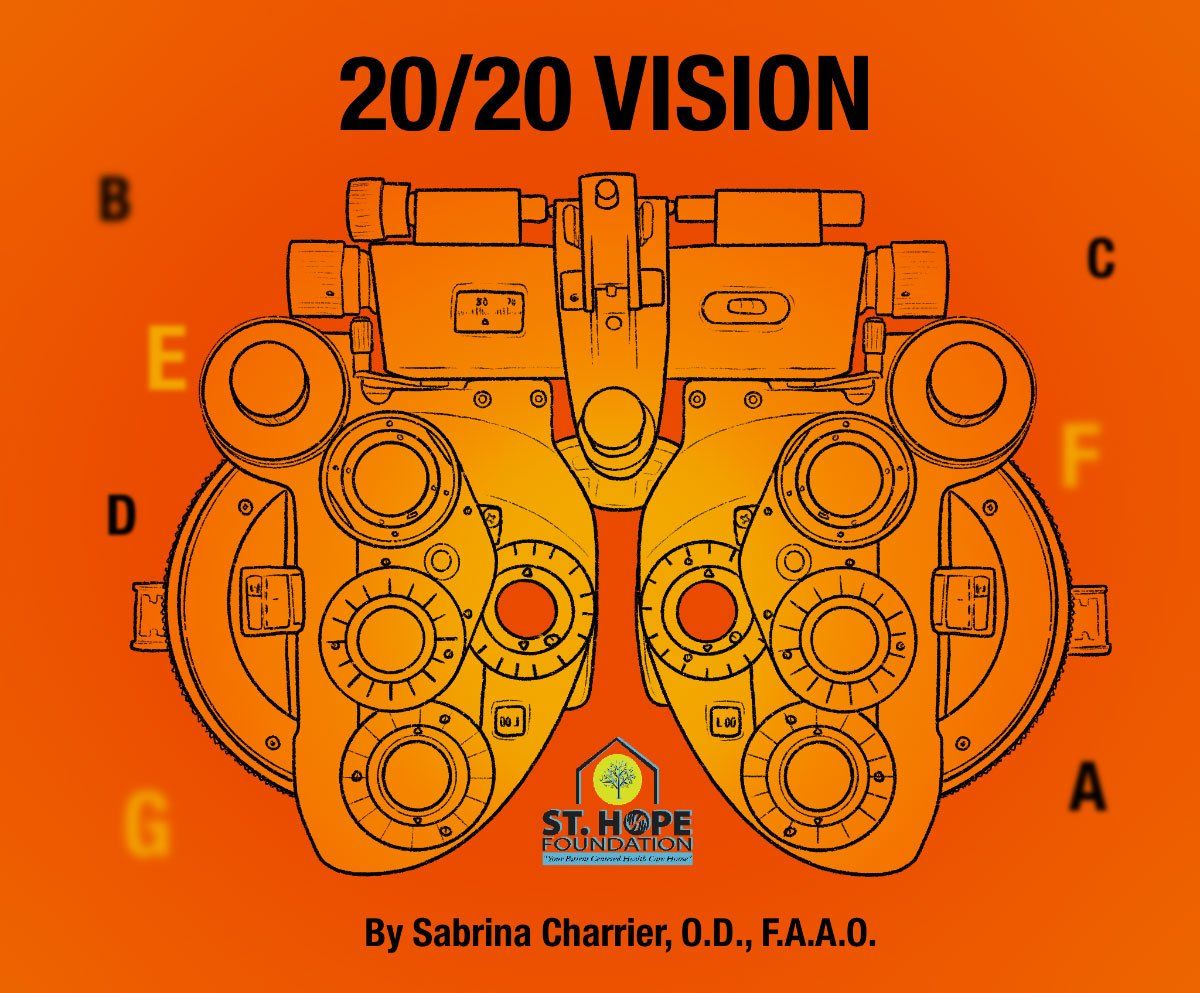Recent Posts
What Does 20/20 Mean?

There are many components to measuring vision. One way is measuring the visual acuity. It lets us know how your vision compares to “normal.” 20/20 vision is a term used to describe how sharp you see. The top number is how far away you are from the eye chart in feet. In countries that use the metric system, they use 6/6 in meters instead of 20/20 in feet. The bottom number is how far away someone with normal vision would be to see the same line. For instance, when you see 20/50 it means you have to be at 20 feet to see what someone else with normal vision can see at 50 feet. The higher the bottom number, the worse the visual acuity. The smaller the bottom number, the better the visual acuity. Twenty feet is important because it is what is called optical infinity. That is the distance your eyes do not need to focus on an object.
Can you have 20/20 and still need glasses?
Absolutely. There are a lot of factors that go into a person’s ability to see. For this article we are just going to focus on the refractive portion. Glasses and contact lenses help bring light to a focus on the retina. People that are “far sighted” have hyperopia. When light enters your eyes, it comes to a focus past your retina. Hyperopes’ party trick is that they can sometimes do a little extra focusing to try to bring that light to a focus on the retina, therefore seeing 20/20. The down side of this is that your eyes get really tired trying to focus extra all of the time and can lead to fatigue or your vision going in and out of focus. The younger you are, the easier it is to do this focusing. That’s why it is important to have children have an exam early in life to ensure proper development of the eyes. Low myopes, or those that are “near sighted,” have light rays that focus in front of the retina. If it’s low enough, these people may be able to guess at the 20/20 line but not see it clearly or sharply. Higher near sighted prescriptions won’t be able to guess at the same line and will be more blurry. Astigmatism occurs when you need more than one prescription to have light focus on the retina. It can be by itself or in combination with myopia or hyperopia. Presbyopia is when you have a change in your up close vision regardless of myopia, hyperopia, or astigmatism. It typically occurs around age 40 and is where you lose your ability to focus up close.
What does it mean if your eyes do not correct to 20/20 in glasses or contacts?
Amblyopia is a term used to describe an eye that has reduced vision due to abnormal visual development. Another reason vision can be reduced is due to early signs of disease the front surface of the eye, cataract changes, or in the back part of the eye. A couple of key numbers to know is 20/40, which is the legal limit of reduced vision while driving in Texas and 20/200 which is the best corrected acuity to be legally blind. If you can still correct to better than 20/200 with your glasses or contacts then you do not fall in this category.









